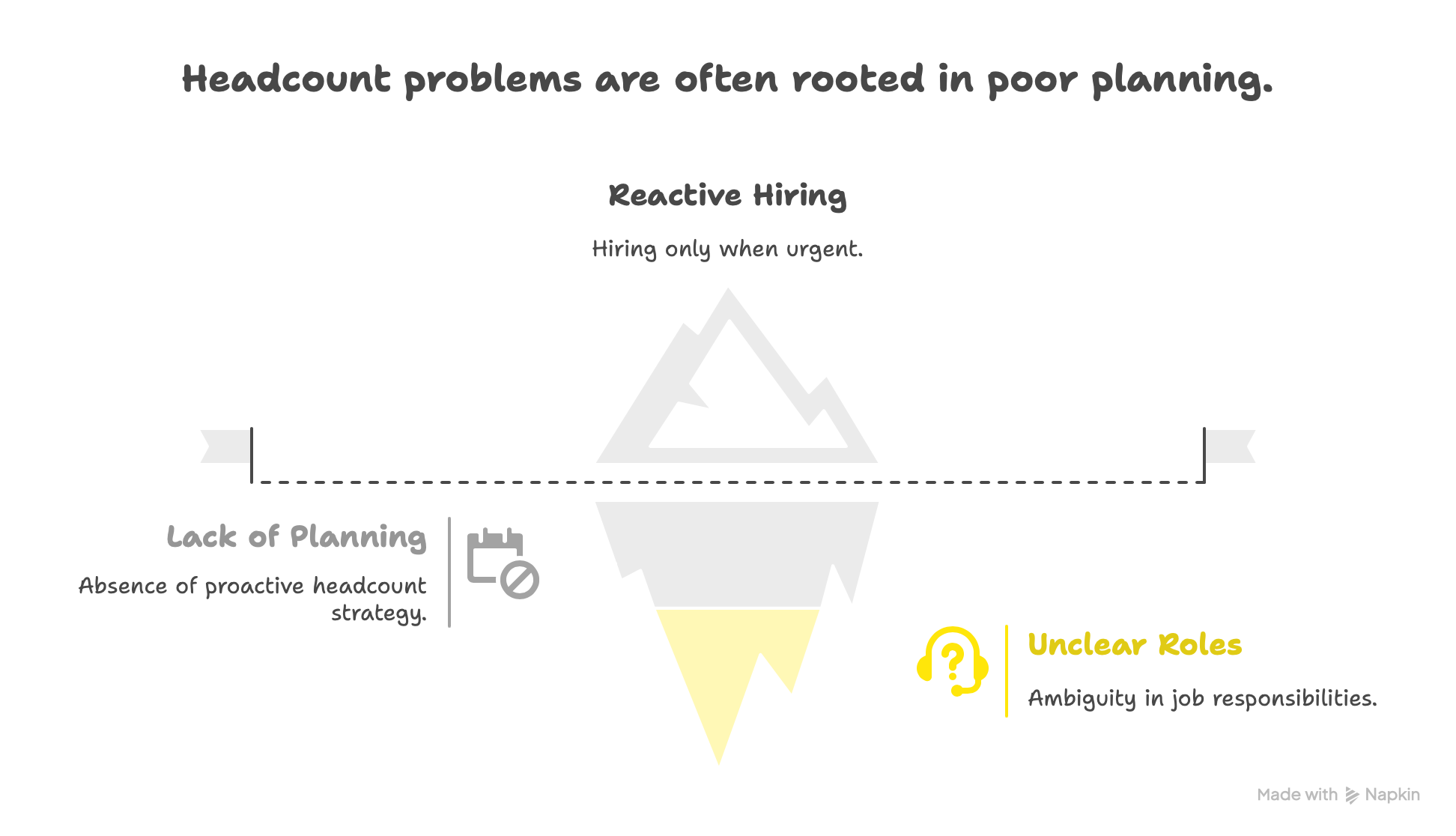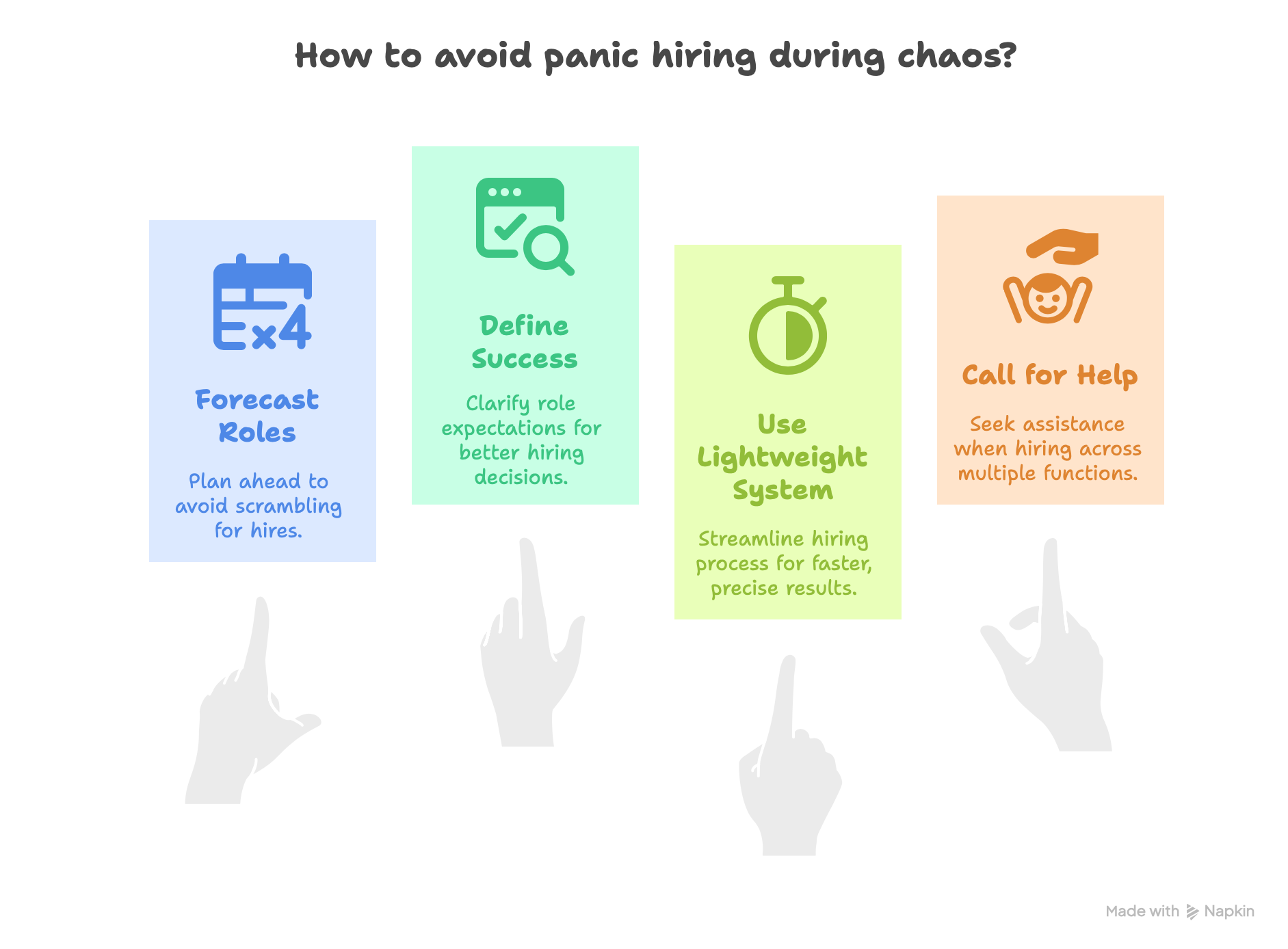You didn’t plan to hire this week. But something broke. Someone quit. The pressure’s on.
So, you post a job. You skim CVs. You rush interviews.
Welcome to panic hiring — a common startup trap that leads to costly mis-hires, burnout, and team instability.
Founders who want to avoid panic hiring in startups should build a simple headcount forecast and adopt strategic hiring practices that prevent costly mis-hires.
In this article, we break down:
- Why panic hiring happens
- What it actually costs
- How to shift from reactive to strategic
- How UnitiQ helps founders stop hiring on fire

Why Startups Fall Into Panic Hiring (and How to Break the Cycle)
Even smart founders fall into this trap:
- You’re too busy building to think about headcount.
- You avoid hiring decisions until there’s real pain.
- When the pain hits — you sprint into recruitment mode with zero prep.

It’s not always a headcount problem. It’s often a planning and clarity problem.
The Hidden Costs of Panic Hiring in Startups
Hiring under pressure usually leads to:
👉 As we explained in Startup Hiring Mistakes That Cost You Talent, early hires shape your entire culture. Every rushed hire is a compounded risk.
LinkedIn research shows startups with structured hiring processes are 3x more likely to hit their scaling goals.
CB Insights found that 23% of startup failures stem from team and people issues.
What to Do Instead: Move from Reactive to Ready
Here’s how high-performing founders avoid panic hiring — even during chaos.

1. Forecast roles before you feel the pain
Create a simple 6-month headcount forecast with just:
- Function
- Timing
- Revenue or delivery trigger
- Role criticality
This lets you plan for sourcing, not scramble.
2. Clarify what “great” looks like
Before posting a job, define:
- What will success look like in 3–6 months?
- What problem does this role solve?
- What soft and hard signals will you evaluate?
We explain this in detail in How to Design a Hiring Process That Doesn’t Scare Off Top Talent.
3. Use a lightweight system
You don’t need ATS bloat. You need:
- A shared hiring scorecard
- A fast but structured interview loop
- Pre-aligned decision-makers
This allows faster precision hiring — see our guide: Speed vs. Precision in Hiring
4. Know when to call for help
If you’re hiring across multiple functions, or don’t have time to run sourcing + screening, don’t default to agencies.
A SaaS startup of 20 employees lost 9 months of runway after two rushed hires failed. By switching to a forecast-driven hiring process, they cut time-to-hire by 40% and scaled their sales team with zero churn.
Final Thought
Panic hiring is a symptom.
The cause? Lack of clarity, planning, and scalable systems.
The fix isn’t more CVs. It’s a smarter approach.
At UnitiQ, we help startups:
- Forecast headcount
- Define what success looks like
- Build interview loops that actually work
- Move fast — without the chaos
👉 Stop hiring on fire. UnitiQ helps founders avoid panic hiring with headcount planning, strategic recruiting, and interview systems that scale. Book a free consult today. Let's talk!
FAQ
What is panic hiring in startups?
It’s when founders hire reactively under pressure, often leading to mis-hires, churn, and wasted costs.
How can founders avoid panic hiring?
By building a headcount forecast, defining success profiles, and using lightweight but structured interview systems.
Why is panic hiring so costly?
Because it causes mis-hires, replacement costs, and team friction — often losing 3–9 months of runway.
🧩 Related Reading:
About Author
Olga Fedoseeva is an award-winning HR executive and people strategist with over 20 years of international experience across EMEA, the US, and APAC. Currently Chief of Staff at Exponential Science and Founder of UnitiQ, she has personally hired more than 1,000 employees and scaled organizations from 30 to 3,000 staff. Recognized as one of the Top HR Women in EV (2021), Olga has led global HR transformation, talent acquisition, and people operations for startups, scale-ups, and multinational enterprises. Her expertise spans the full HR lifecycle—succession planning, DEI, HR tech integration, workforce planning, and executive coaching—helping businesses align people strategies with growth objectives while fostering inclusive, high-performance cultures.
